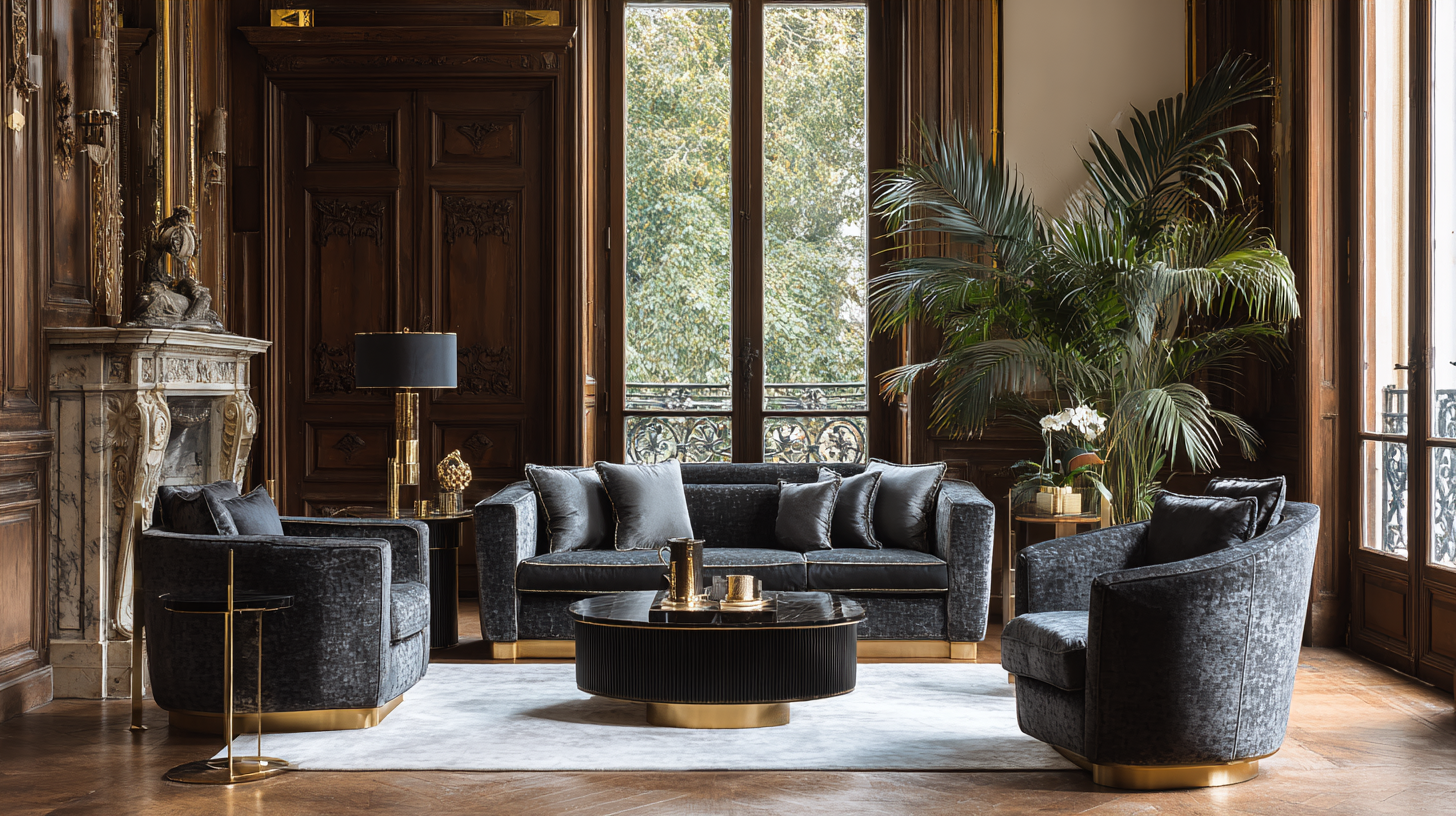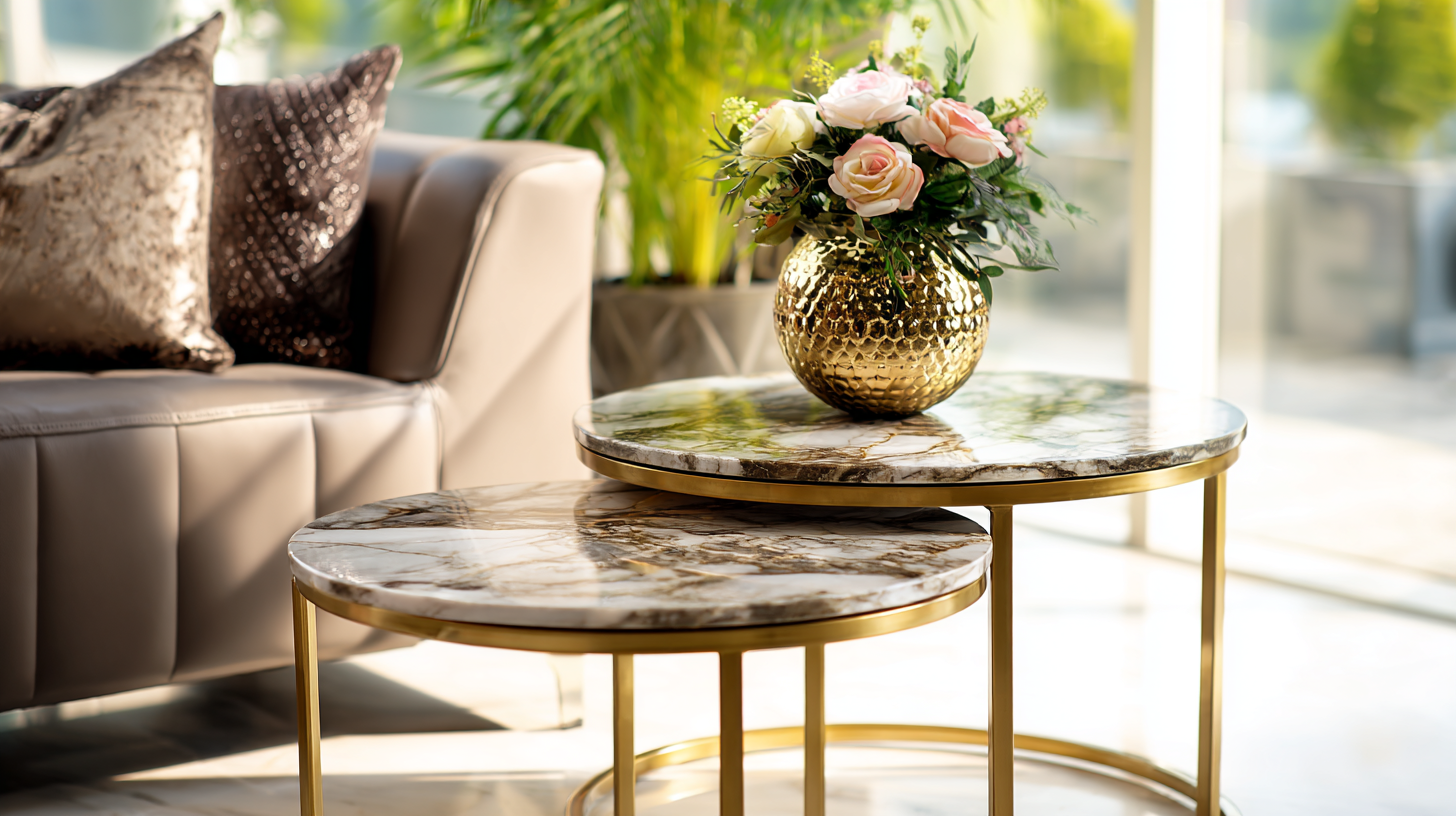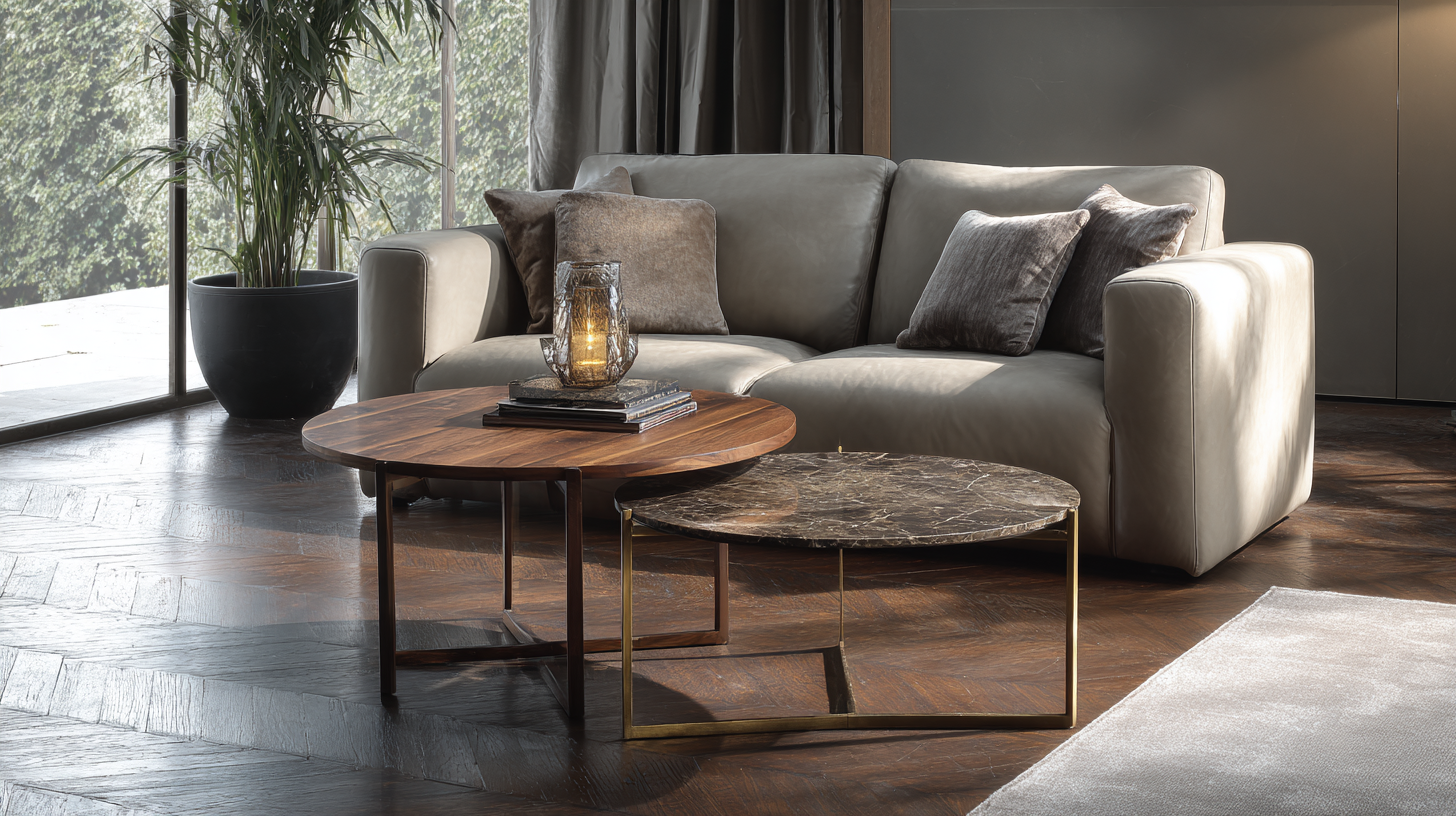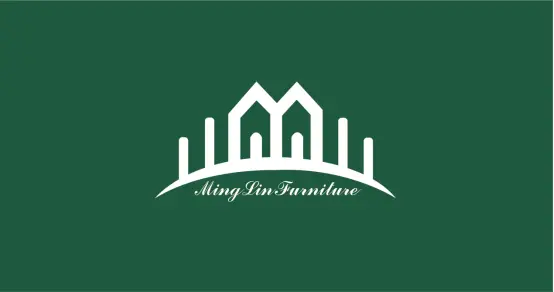In 2025, the home furnishing industry is expected to see a significant shift in consumer preferences, particularly regarding Side Coffee Tables. According to a recent report by Allied Market Research, the global coffee table market is anticipated to grow at a CAGR of 4.5%, reaching a value of $1.8 billion by the end of the decade. This growth is driven by the increasing demand for multifunctional and stylish furniture pieces that cater to contemporary living spaces. Moreover, as more consumers prioritize home aesthetics and functionality, the trend leans toward innovative designs that combine form and practicality. Understanding these industry trends is crucial for making informed choices when selecting the perfect Side Coffee Tables that not only enhance the living environment but also meet the evolving needs of today's homeowners.

As China's coffee consumption continues to grow, the impact of its manufacturing sector on coffee table quality becomes increasingly relevant. The country's production capabilities allow for a diverse range of designs and materials that cater to both local and global markets. While many consumers may focus on aesthetics, the quality of the products—largely driven by Chinese manufacturing practices—plays a crucial role in ensuring customer satisfaction and longevity of the furniture.
Moreover, the rising demand for coffee in China is pushing manufacturers to meet higher quality standards. The coffee market's expansion has led businesses to invest in better materials and craftsmanship, aligning with contemporary design trends. This evolution highlights the intersection of culture and quality, as manufacturers adapt to consumer preferences while navigating the challenges posed by climate change that can affect raw material sourcing. As a result, consumers are not only gaining access to stylish side coffee tables but also contributing to a sustainable market that values environmental considerations alongside craftsmanship.

When choosing the best side coffee tables, key material considerations play a critical role in ensuring durability and longevity. As trends indicate a shift towards low-maintenance living, investing in robust materials becomes essential. Consider materials like solid wood or high-quality metals that not only withstand daily wear and tear but also add an element of timeless elegance to your space. Additionally, the focus on materials that are easy to clean and resistant to stains can significantly enhance the practicality of your coffee table in a busy household.
Another noteworthy idea is to explore composite materials or specially treated wood that retains its durability while offering a stylish appearance. Such options are particularly beneficial for outdoor coffee tables, designed to endure changing weather conditions while maintaining aesthetic appeal. By prioritizing these material considerations, you can create a functional yet chic atmosphere that aligns with modern lifestyle demands, making your selections a smart investment for both style and usability.
When selecting the ideal side coffee table, integrating functionality with aesthetics is crucial. Current design trends emphasize a seamless blend of these elements. For example, the recent introduction of sculpted coffee tables showcases how artistic forms can still serve practical purposes. Such designs not only elevate the visual appeal of a living space but also provide innovative storage solutions or multi-functional uses.
When shopping for coffee tables, consider these tips: first, assess the scale of your seating area; a well-sized table enhances flow without overwhelming the space. Additionally, pay attention to materials and finishes. Darker hues and textured surfaces are gaining popularity, reflecting the moodier interiors trend for 2025. Finally, don't overlook decor; enhancing your coffee table with thoughtfully chosen accessories can instantly transform its appearance.
As we move towards more personalized and vibrant spaces, coffee tables will take center stage, acting as both functional furniture and artistic statements. The rising trend of rounded furniture and earth tones also suggests that the side coffee tables of tomorrow will serve not just as a place for decor, but as a key component of harmonious room design.

In today's coffee table market, understanding consumer preferences is crucial for selecting the ideal side coffee table. With an increasing emphasis on multifunctionality, many buyers are looking for tables that not only enhance the aesthetic of their living spaces but also serve practical purposes. Features such as built-in storage, adjustable heights, and even integrated charging ports are becoming more popular, allowing consumers to stay connected while enjoying their coffee break.
Moreover, sustainability plays a significant role in the decision-making process. As eco-consciousness rises, consumers are leaning towards materials that are not only stylish but also environmentally friendly. Tables crafted from reclaimed wood or those featuring non-toxic finishes are in high demand. This trend highlights a shift in priorities, where modern buyers favor products that align with their values while elevating their home decor. By keeping an eye on these evolving consumer preferences, retailers can better cater to their clients and curate collections that resonate with today's market.
Sustainable practices in coffee table production have gained significant traction in recent years, reflecting a broader shift towards eco-friendly furniture manufacturing. According to a report by the Sustainable Furnishings Council, over 70% of consumers now prioritize sustainable materials when purchasing furniture, including side coffee tables. This trend is not just consumer-driven; many manufacturers are adopting responsible sourcing and production methods to minimize their environmental impact. For instance, brands are increasingly using reclaimed wood and recycled materials, reducing deforestation and waste.
Additionally, the global market for sustainable furniture is projected to grow by over 10% annually, according to a recent study by Research and Markets. This growth can be attributed to an increasing awareness of environmental issues and the desire for products that contribute to a sustainable lifestyle. Innovations such as non-toxic finishes and low-emission manufacturing processes are becoming standard practice, allowing manufacturers to not only meet regulatory standards but also appeal to environmentally conscious consumers. As the industry continues to embrace these sustainable practices, coffee tables are evolving from merely functional pieces to statements of personal values and environmental responsibility.
| Feature | Importance Rating (1-5) | Sustainability Aspect | Material Examples |
|---|---|---|---|
| Size | 4 | Compact Design for Small Spaces | Reclaimed Wood, Bamboo |
| Style | 5 | Modern Aesthetic | Metal, Glass |
| Durability | 5 | Long-Lasting Materials | Eco-friendly Resin, Solid Wood |
| Functionality | 4 | Multi-purpose Use | Foldable, Storage Options |
| Price | 3 | Affordable Sustainability | Recycled Materials |
